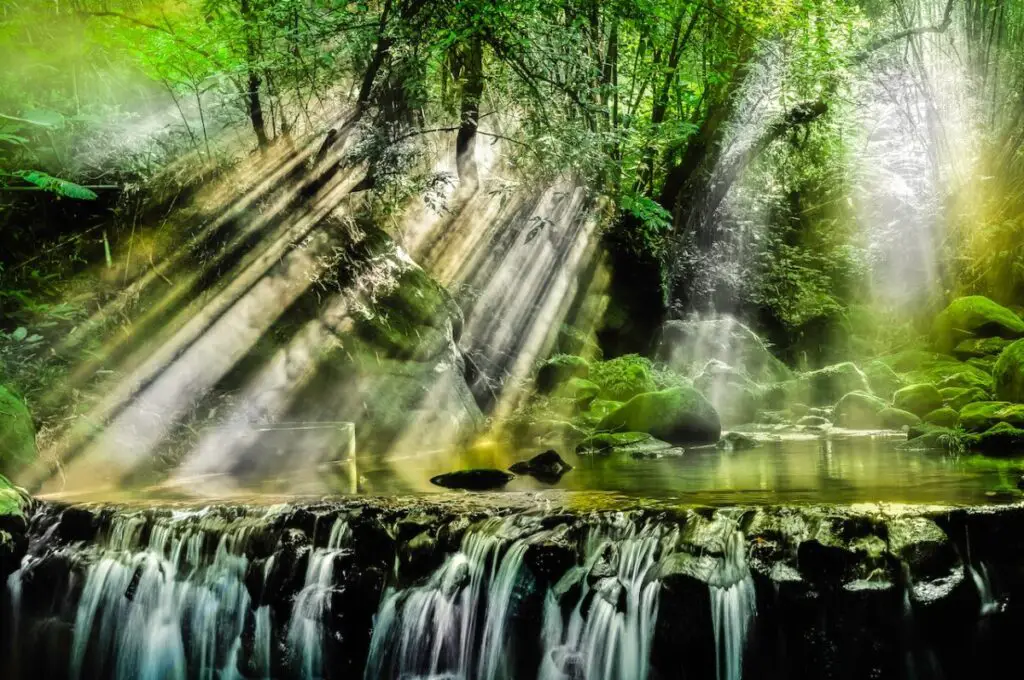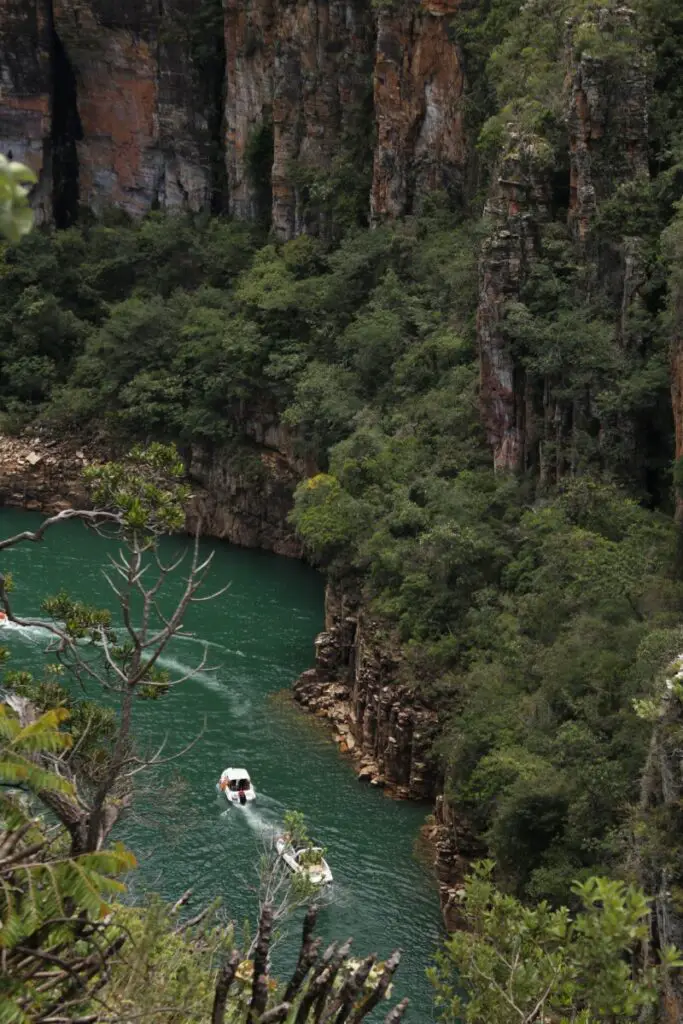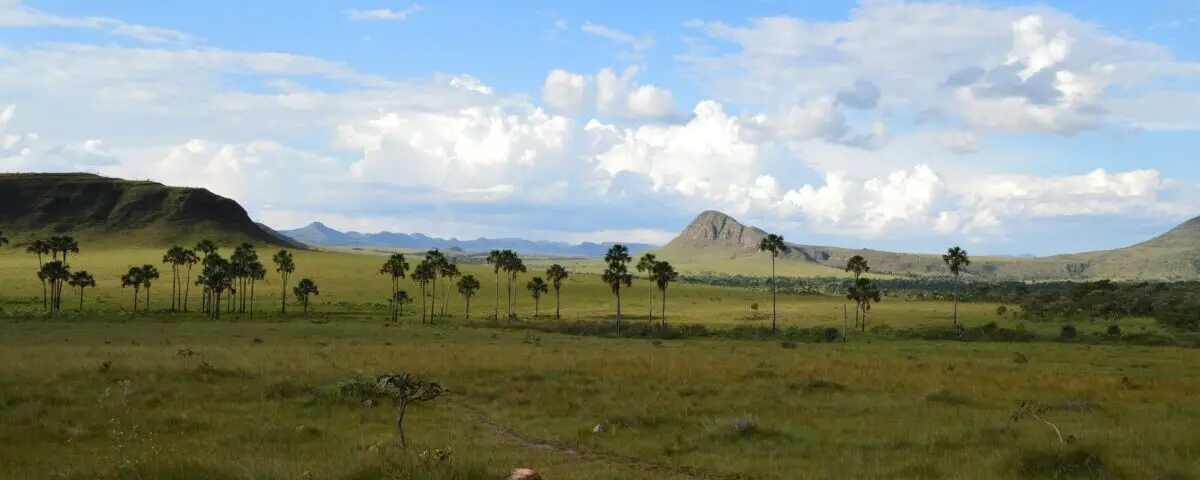Despite its importance, few outside of Brazil know what the Cerrado is – and most of those have never heard of the critically important Brazilian ecoregion.
So, what is the Cerrado? The sprawling ecoregion in central Brazil is a unique and biologically diverse place on planet Earth. It is a place where towering savannas and rolling hills intersect, where a rich tapestry of life is woven together in delicate balance.
In this article, we embark on a journey to find out more about the Cerrado. We want to know why it is critical to our planet’s survival, and what we can do to protect the magnificent region of Brazil. We start with its stunning physical features and unparalleled biodiversity. Then from the human impact that threatens its existence, we look deep into the heart of the Cerrado to uncover its secrets and its beauty.
So, pack your bags, and join us on this incredible adventure to explore the Cerrado, the unsung hero of the Brazilian wilderness.
A geographical overview of the Cerrado

Tucked between the Amazon, Atlantic Forests and Pantanal, the Cerrado is the largest savanna region in South America. Its total area is approximately half that of the Amazon rainforest, and, as such, it represents the second-largest biome in South America. It is the most biodiverse savannah in the world, concentrating 5% of the planet’s species and home to 40% of Brazil’s water production.
The Water Box has Two Seasons a Year
The Cerrado is limited to two dominant seasons throughout the year; wet and dry. Annual temperatures for the Cerrado average between 22 and 27 °C and average precipitation between 80–200 cm for over 90% of the area; this ecoregion has a very strong dry season during the southern winter, which spans April to September.
It plays a major role in Brazil’s water supply, water quality control, and is sometimes referred to as the
- water box of Brazil.
- cradle of Brazil’s waters, and
- arc of springs.
Because the vast vegetation of the Cerrado avoids too much water interception by foliage, its unique landscape permits efficient water retention, infusion into the soil, and filtration of the water that feeds key aquifers and rivers.
Brazils River Basin Heads
Additionally, the bulk of Brazil’s river basin heads are concentrated in the Cerrado, making it the source and supply of many of South America’s major rivers.
- Rio Xingu, a tributary of the Amazon.
- Rio São Francisco.
- Rio Tocantins and its tributary
- Rio Araguaia.
- Rio Paraguai, and
- Rio Paraná.
The waters of the rivers and their tributaries feed many of Brazil’s core hydroelectric plants, such as the Itaipu hydroelectric plant on Rio Paraná, one of the largest hydroelectric plants in the world.
Biodiversity in the Cerrado

The Cerrado is Brazil’s biodiversity hotspot–and for good reason. Thanks to its large land areas (438,910 square kilometres) and sprawling water territories, the Cerrado is home to the following ecosystems:
- 10,400 species of plants (with 50% of them endangered, and over 4000 found nowhere else on earth)
- 935 species of birds
- 780 freshwater fish
- 113 amphibian varieties
- 180 reptiles
- 300 mammal species, and
- over 14,425 types of insects
Ecosystem diversity
The wide variety of ecosystems that the Cerrado harbours makes these species especially vulnerable to extinction, as, if any harm comes to them, they cannot be easily relocated. It is estimated that plant species in the Cerrado are twice as likely to become extinct than plants in other Brazilian ecosystems, including the Amazon. The Cerrado biome’s main areas are the plateaus in the centre of Brazil. The main habitat types include
- forest savanna.
- wooded savanna.
- park savanna, and
- wooded savanna.
Savanna wetlands and gallery forests are also featured. In all this makes up 21% of Brazil’s entire land mass.
The Cerrado is shrinking twice as fast as the Amazon rainforest. 21,000 square kilometres (over two million hectares) of savannah were destroyed each year between 2002 and 2008.
Protection for the Cerrado
A 2007 Conservation International study proved that, by 1985, 27% of the Cerrado had already been lost. In less than twenty years, the percentage lost rose to 57%. During that time, the Cerrado declined 1.1 percent every year, while the Brazilian Amazon declined by less than 0.5 per cent per year.
Environmentalists have welcomed a decree to protect the Cerrado amid the country’s high deforestation levels and rising greenhouse emissions during the rule of Jair Bolsonaro. The mandate establishes an actionable plan for the
- Amazon Rainforest.
- Cerrado savanna.
- Atlantic Forest.
- semi-arid Caatinga.
- Pampas grasslands, and
- Pantanal wetlands.
This is based on successful past strategies in the Amazon that have proven to be successful. In addition, studies have found that providing Brazilian cattle ranchers with customised training in sustainable pasture restoration is likely to bring long-term economic and environmental benefits back to the Cerrado without sacrificing their livelihoods.
Negative Human Impact on the Cerrado
The Cerrado is disappearing largely due to human involvement. The adoption of soy and other crops–namely corn and rice is widespread amongst Brazilian farmers. This has pushed livestock from the Cerrado towards the edges of the Amazon. And it has inadvertently contributed to deforestation.
Farming Mechanisation
Mechanised soy farming and livestock-breeding is responsible for the loss of half of the Cerrado in the past 50 years. This was triggered by an agricultural revolution in the 1960s, when the Brazilian government developed its new capital city, Brasilia, through the Cerrado in order to more easily ship agricultural and livestock products.
The Cerrado was thought to be a difficult place for agriculture. Then researchers at Brazil’s agricultural and livestock research agency, Embrapa, discovered otherwise. They found its vast lands could be made fit for industrial crop growing.
Negative Impact on the Environment
Ignoring the negative environmental impact, they integrated phosphorus and lime into the soil. In the late 1990s, they poured between 14 million and 16 million tons of lime on Brazilian fields each year. They then increased it to 25 million tons in 2003 and 2004; a staggering five tons of lime per hectare. The change in soil quality allowed industrial agriculture to boom in the area, but at a heavy cost to the environment.
The result meant only 21% of the Cerrado’s original lands remained. However, conservation efforts showed no signs of slowing down, with 7.5% of the Cerrado being protection. Many advocates hope that, with enough encouragement, the Brazilian government will invest more in restoration efforts.
Protection for some
Parts of the Cerrado under protection are:
- Chapada dos Veadeiros National Park: Situated in the state of Goias, Brazil, Chapada dos Veadeiros National Park is made up of over 655 square kilometres on some of Brazil’s highest plateaus. This protected area in the Cerrado has been listed as a UNESCO World Natural Heritage Site.
- Emas National Park: Emas National Park is also a UNESCO World Natural Heritage Site. Home to jaguars, giant anteaters, maned wolves, and pumas, the park lies in central-western Brazil.
- Serra do Tombador Nature Preserve: Serra do Tombador Nature Preserve is a private reserve created by the Nature Conservancy and the Brazilian organization O Boticario. The Nature Conservancy hopes to establish a corridor between the Serra do Tombador Nature Preserve and Chapada dos Veadeiros National Park in the near future.
The Cost of Ignorance
Brazilian agriculturalists and ministers have publicly regarded the Cerrado as having next to no conservation value, and the government has protected only 1.5% of the Cerrado biome in Federal Reserves.
By 1994, an estimated 695,000 km of the Cerrado (35% of the area) had been converted for industrial means. In total, 37.3% of the Cerrado has been converted to human use, with 41.4% being used for a blend of pasture and charcoal production. The forests in the region have been the most heavily affected, with only 432,814 km, or 21.3% of the original vegetation, remaining intact.
During the last 25 years in Brazil, this crucial biome has become increasingly threatened by industrial farming.
- Emphasis on soybeans.
- Unregulated expansion of industrial agriculture.
- Burning of lush vegetation for charcoal, and
- Long-term development of dams for irrigation purposes.
All these combined put several Brazilian rivers under threat.
Final thoughts
The Cerrado, a precious gem hidden in the heart of Brazil, is a place of unparalleled beauty and biodiversity. It is home to unique species of plants and animals, meaning it is critical to maintaining the delicate balance of life on Earth.
This magnificent ecoregion has been under threat from human activities, which are disrupting its delicate ecosystem.
The conclusion of our journey through the Cerrado leaves us with a sense of awe and wonder… and a call to action. It’s time for us to spread the word and raise awareness about the importance of this incredible region. It’s time to act to protect the Cerrado, not only for its own sake but for the sake of all life on Earth. The future of the planet depends on it.
So, let’s make a pledge to protect the Cerrado and its unique biodiversity. Let’s work together to ensure this magnificent ecoregion remains a thriving, vibrant part of Earth for generations to come.
The Cerrado may be a hidden gem, but its importance cannot be overstated. It’s time to shine a light on the Cerrado and make it a critically important ecoregion everyone is concerned about.
FAQs
What is the Cerrado?
The Cerrado is a large ecoregion in central Brazil characterised by its unique physical features, diverse flora and fauna, and delicate balance of life.
Why is the Cerrado important?
The Cerrado is important because it is a critical part of global biodiversity and is home to unique species of plants and animals that are not found anywhere else on Earth. “Every time you go to the Cerrado to do field research, it’s not rare to discover a new species of plant or even animals,” said Manuel Ferreira, a geographer at the Federal University of Goias, in an interview with Reuters. “There are still many species yet to be studied.”
What are the physical characteristics of the Cerrado?
The Cerrado is characterised by its towering savannas, rolling hills, and diverse vegetation. It has a distinct climate with hot, dry summers and mild, wet winters.
What is the biggest threat to the Cerrado?
The biggest threat to the Cerrado is negative human activities, such as deforestation, agriculture, and mining, which are disrupting its delicate ecosystem and threatening its biodiversity.
What is being done to protect the Cerrado?
Efforts are being made to conserve and protect the Cerrado, including government initiatives, conservation organisations, and local communities working together to raise awareness and reduce the impact of human activities in the region.
When was the Cerrado first discovered?
The first written account of the Brazilian Cerrado was provided by Danish botanist Eugenius Warming in 1892, in which he describes the main features of the vast Cerrado vegetation in the sprawling state of Minas Gerais.
What flora or fauna in the Cerrado is now endemic?
Despite conservation efforts, not all wildlife in the Cerrado has been saved from the impact of deforestation. The dwarf tinamous, maned wolves, white-winged nightjars, and 26 different species of lizards are all considered endemic–meaning that they can only survive in the limited area of the Cerrado and that their survival depends on the Cerrado’s survival.
Additionally, of the ecosystems’ 10,000 species of plants, nearly half are endemic.
Is the Cerrado Brazil’s most threatened ecosystem?
Yes. The Cerrado is classified as Brazil’s most threatened ecosystem due to its rapidly shrinking land size.
How is deforestation of the Cerrado progressing?
Deforestation rose to a seven-year high in 2022, with activists working to lower this. However, the Brazilian government officially stopped tracking the deforestation in 2021, citing lack of funds. Due to official data being scarce, activists are turning to public education to rally in favour of reinstating official monitoring.

